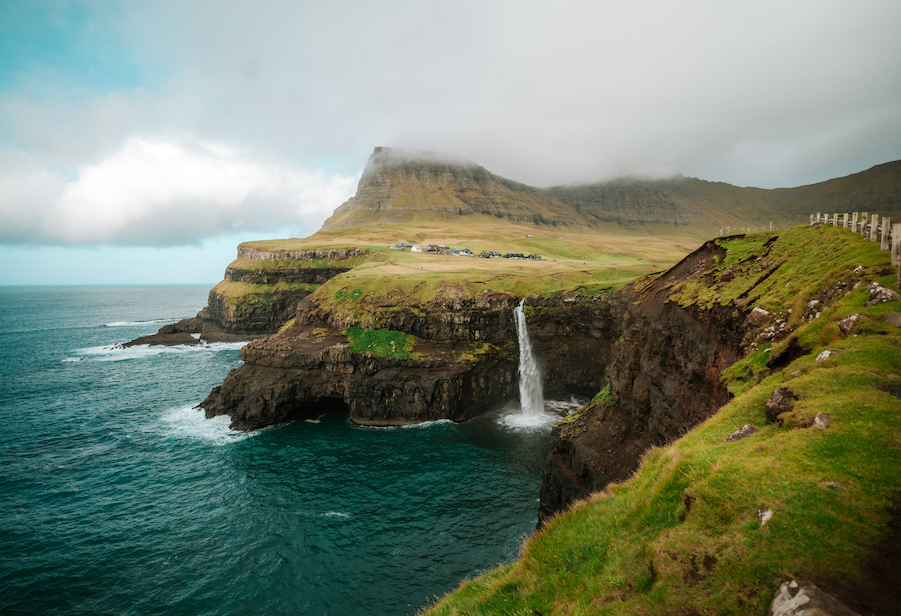
Welcome to the ultimate travel guide to the Faroe Islands, a destination of rugged beauty and unspoiled landscapes that beckon travelers seeking an extraordinary adventure. If you’ve ever dreamed of exploring a remote and breathtakingly scenic destination, you’re in for a treat. My mission in this blog post is to equip you with the most practical and comprehensive information on how to plan your perfect Faroe Islands getaway. I’ll take you on a journey through the essential details, from understanding the unique geography and location of these North Atlantic gems to providing expert insights on booking the best trip.
In this travel guide, I aim to demystify the Faroe Islands, helping you navigate the logistics and create a memorable travel experience. You’ll discover the where, when, and how of visiting this remote archipelago, as well as invaluable tips on making the most of your time there. Whether you’re a nature enthusiast, an adventure seeker, or a photographer looking for the perfect shot, this post is your one-stop resource for everything Faroe Islands.
So, fasten your seatbelts and get ready to embark on an unforgettable journey. By the time you’ve finished reading, you’ll have all the practical information you need to book the best trip to the Faroe Islands and create memories that will last a lifetime. Let’s dive into this remote and captivating destination together, step by step.
Chapters
Where are the Faroe Islands located?
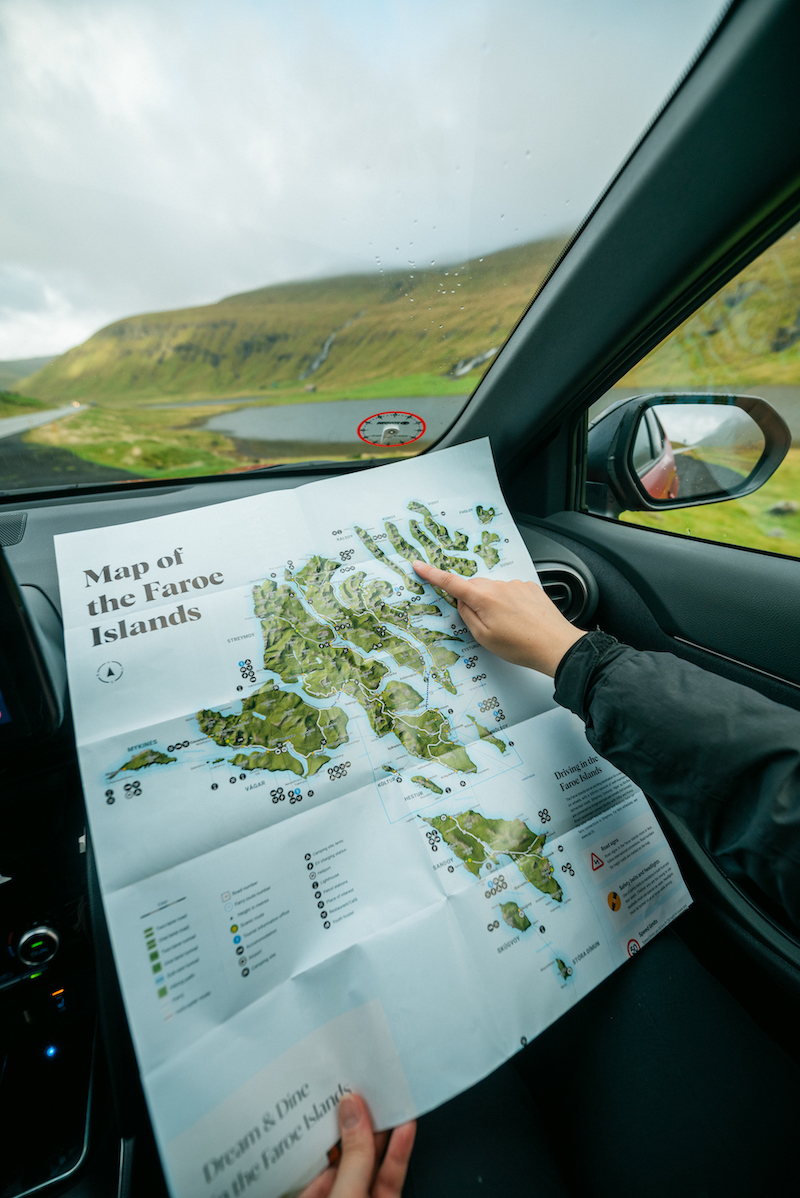
The Faroe Islands are nestled in the North Atlantic Ocean, situated approximately halfway between Iceland and Norway. Geographically, they are located about 320 kilometers (200 miles) northwest of Scotland. This remote and rugged destination, often described as a hidden gem of the North Atlantic, is an autonomous territory within the Kingdom of Denmark. Comprising 18 main islands and several smaller islets, the Faroe Islands offer a breathtaking landscape of dramatic cliffs, lush valleys, and pristine fjords. Its unique location, characterized by the cool North Atlantic waters and the influence of the Gulf Stream, results in a mild maritime climate, making it an attractive destination for travelers seeking natural beauty and outdoor adventures. The Faroe Islands, with their distinctive location and captivating scenery, beckon explorers and nature enthusiasts to discover their remote charm and extraordinary landscapes, truly living up to the dream of an off-the-beaten-path travel destination.
Faroe Islands: how to get there?
Getting to the Faroe Islands is more convenient than ever, thanks to the new direct routes offered by Atlantic Airways, the national airline of the Faroe Islands. This company has a rich history dating back to its establishment in 1987. Originally founded as a helicopter company, it quickly expanded to include fixed-wing aircraft, becoming a pivotal player in connecting these remote islands to the world.
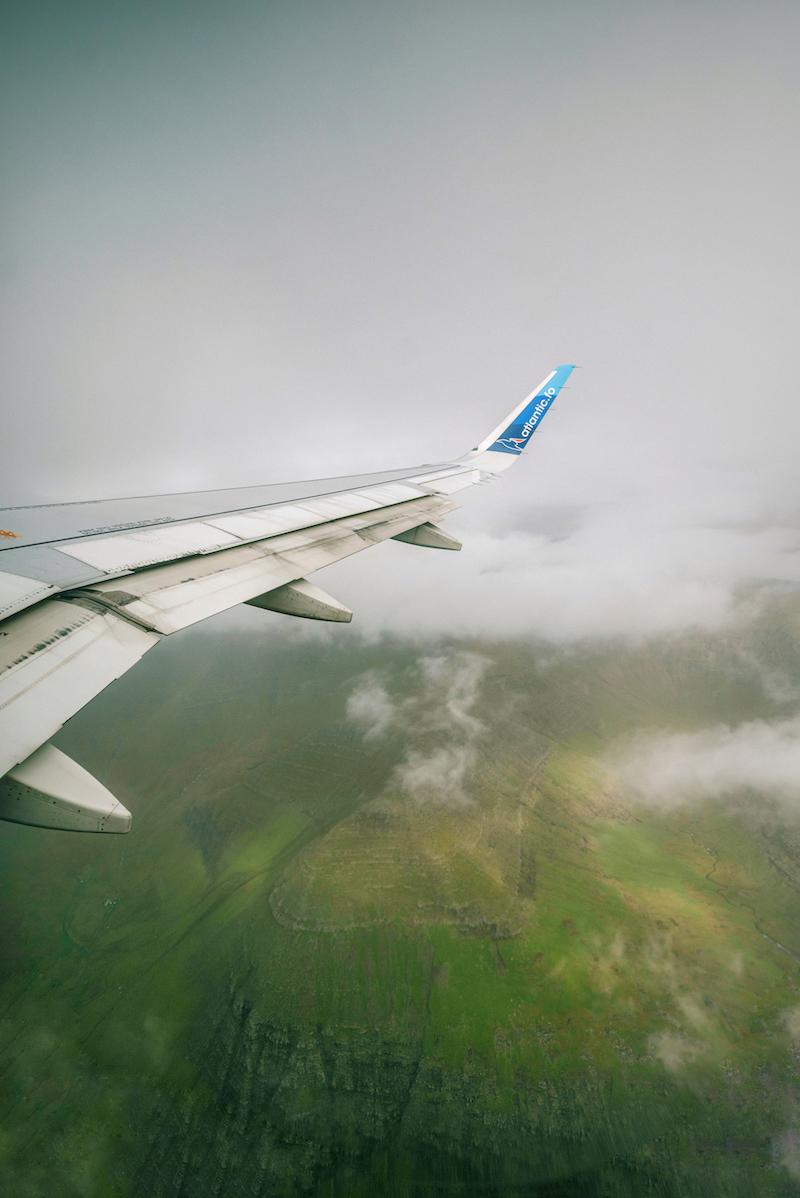
If you’re traveling from Europe, you’re in for a real treat. Atlantic Airways has recently launched a direct route from Paris (France) to the Faroe Islands, making the journey smoother and more accessible than ever before.
This direct flight from Paris to Vágar Airport significantly cuts down travel time, allowing you to dive right into the Faroese experience. But that’s not all – Atlantic Airways also offers direct routes from other major European cities, including Copenhagen (Denmark), Reykjavik (Iceland) and Edinburgh (Scotland). With a well-connected network and these direct routes, reaching this remote paradise in the North Atlantic has never been easier. So wherever you’re flying from, Atlantic Airways has you covered, ensuring a convenient and comfortable journey to the Faroe Islands.
Travelers coming from North America or other international destinations may consider flying into one of these major European cities. So, whether you’re flying from Paris, Copenhagen, Reykjavik, or Edinburgh, Atlantic Airways, with its strong history and commitment to exceptional service, has you covered, ensuring a convenient and comfortable journey to the Faroe Islands.
If you prefer sea travel, you can explore the possibility of taking a ferry from Iceland, which offers a scenic maritime adventure with breathtaking views of the Faroese landscape. Regardless of your choice, these options ensure that your adventure to the Faroe Islands is not only accessible but also a memorable part of your overall travel experience.
Faroe Islands: travel tips
- Language: Faroese is the official language, but most Faroese people also speak Danish and often English. English is commonly used in the tourism industry.
- Weather Preparedness: Be ready for unpredictable weather. Pack layers, a waterproof jacket, and sturdy, waterproof footwear. Regardless of the season, rain is always a possibility.
- Transportation: Public transportation is limited, so consider renting a car to explore the islands independently. Roads are well-maintained but can be narrow and winding, so drive with caution. Rent a car here.
- Respect the Environment: The Faroe Islands’ natural beauty is pristine. Respect the environment by staying on marked paths, not disturbing wildlife, and properly disposing of your waste.
- Camping: Wild camping is not allowed, but campsites are available for a fee.
- Alcohol: The Faroe Islands have strict alcohol regulations. You can only buy alcohol at government-operated stores, and it can be quite expensive. Consider purchasing alcohol at duty-free shops in the airport upon arrival.
- Safety: The Faroe Islands are considered very safe. However, be cautious when hiking, as the terrain can be challenging and the weather unpredictable.
- Cultural Etiquette: While the Faroe Islands are fairly relaxed, it’s important to be respectful of local customs and traditions. Greet locals with a smile and a nod when passing on the street.
- Internet and Mobile Coverage: Internet and mobile coverage are generally good, but be aware that in very remote areas, you may experience limited connectivity.
- Photography: The Faroe Islands offer countless photo opportunities. However, always ask for permission before taking pictures of local residents, and respect any restricted areas or “no photography” signs. Drone photography is allowed in the Faroe Islands and offers unparalleled perspectives of the dramatic landscapes. While it’s a fantastic way to capture the rugged beauty, there are strict regulations. Ensure you familiarize yourself with the specific rules and limitations, including no-fly zones and privacy considerations.
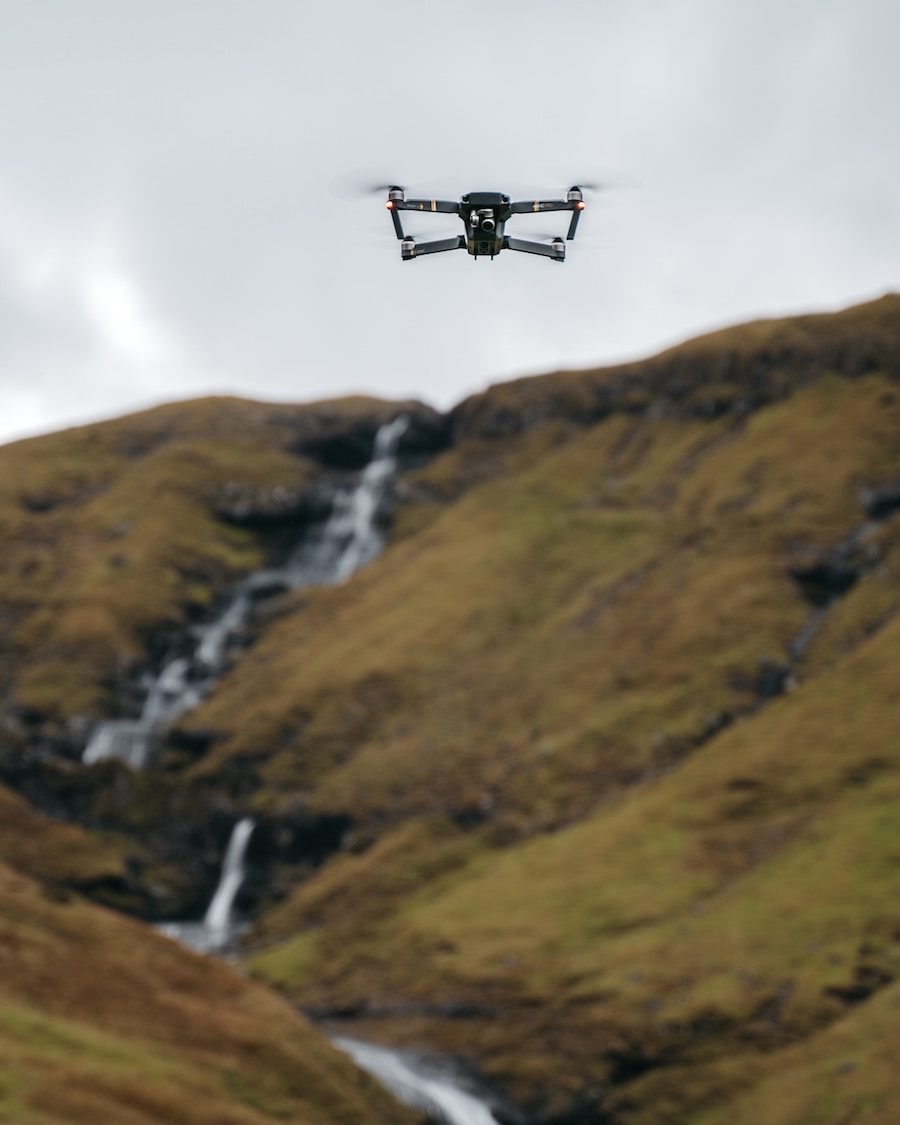
Faroe Islands Currency
In the Faroe Islands, the official currency is the Danish Krone (DKK), and in addition to the DKK, the Faroese Króna (FKR) is also in circulation. While credit and debit cards are widely accepted in most places, it’s advisable to carry some cash, especially for smaller purchases and in more remote areas where card facilities might be limited. You’ll find ATMs available in towns and larger villages, and both Danish Krone (DKK) and Faroese Króna (FKR) are widely accepted, making it convenient for travelers as you can use either currency for your transactions in most places across the Faroe Islands. Keep in mind that the Faroe Islands are part of the Kingdom of Denmark, and the currency used here includes both DKK and FKR, with the exchange rate being 1 DKK = 1 FKR.
Faroe Islands Weather
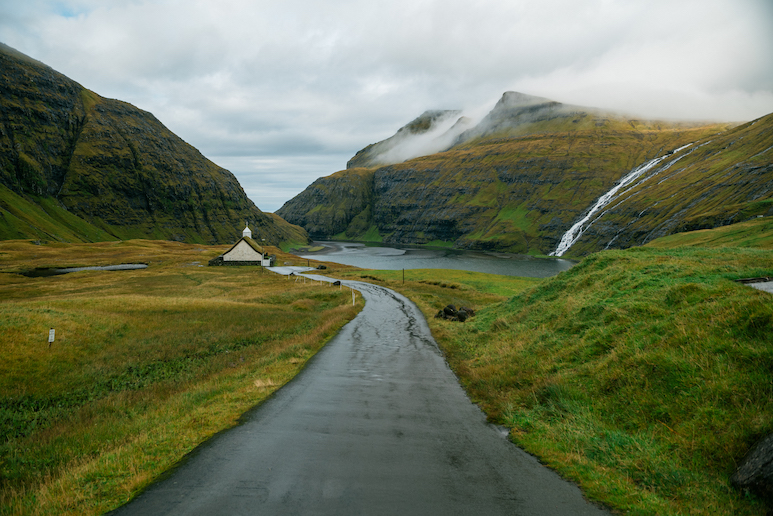
Understanding the Faroe Islands’ ever-changing weather is not just practical; it’s essential for planning a successful trip to this enchanting archipelago. The Faroe Islands’ climate is characterized by its maritime influences and dramatic seasonal shifts, each offering a unique atmosphere and set of experiences for travelers. In this section, I’ll take you on a journey through the seasons, delving into what you can expect in terms of weather and how it can impact your travel plans. From the vibrant awakening of spring to the tranquility of winter’s solitude, I’ll provide you with the insights you need to choose the perfect time to explore the Faroe Islands and pack accordingly. So, let’s dive into the ever-shifting skies and discover the captivating weather patterns that shape this remote and breathtaking destination.
Spring in the Faroe Islands
Spring in the Faroe Islands, which typically spans from March to May, is a season of awakening. The islands burst into life as the winter frost recedes, and nature reclaims its vibrancy. While temperatures remain on the cool side, ranging from 5°C to 10°C (41°F to 50°F), the Faroes come alive with colorful flora and lush green landscapes. It’s an excellent time for birdwatching, with countless seabirds returning to their nesting grounds. Be prepared for frequent rain showers and ever-changing weather, so packing layers and waterproof gear is essential.
Summer in the Faroe Islands
Summer in the Faroe Islands, from June to August, is the most popular time to visit. With temperatures ranging from 10°C to 15°C (50°F to 59°F), this is the warmest season, and the days are long, often with nearly 24 hours of daylight. It’s an ideal time for hiking, wildlife exploration, and outdoor activities. The landscapes are at their most picturesque, with vibrant green valleys, wildflowers in bloom, and abundant birdlife. But don’t forget your raincoat, as the islands are still subject to frequent rainfall, even in summer.
Autumn in the Faroe Islands
Autumn, from September to November, ushers in a season of dramatic landscapes and fewer tourists. The temperatures start to drop, ranging from 8°C to 12°C (46°F to 54°F). This season offers a unique blend of fading summer colors and the emergence of stunning fall foliage. It’s an excellent time for photography, as the changing light and weather patterns create captivating scenes. Be prepared for more unpredictable weather and shorter days as the Faroe Islands transition into winter.
Winter in the Faroe Islands
Winter in the Faroe Islands, from December to February, is a time of stark beauty and tranquility. Daylight hours are limited, with only a few hours of dim sunlight each day, and temperatures range from 3°C to 7°C (37°F to 45°F). While it’s the coldest and darkest season, it has its own charm. It’s the best time to witness the Northern Lights, and if you’re a fan of cozy atmospheres and solitude, this is the season for you. Be ready for wet and windy weather, as winter storms can be quite powerful.
Understanding the distinct characteristics of each season in the Faroe Islands is vital for planning the timing of your trip and packing appropriate clothing and gear. Whether you’re seeking the vibrant life of summer or the serene solitude of winter, the Faroes offer unique experiences throughout the year.
Faroe Islands Map: how to travel within the country
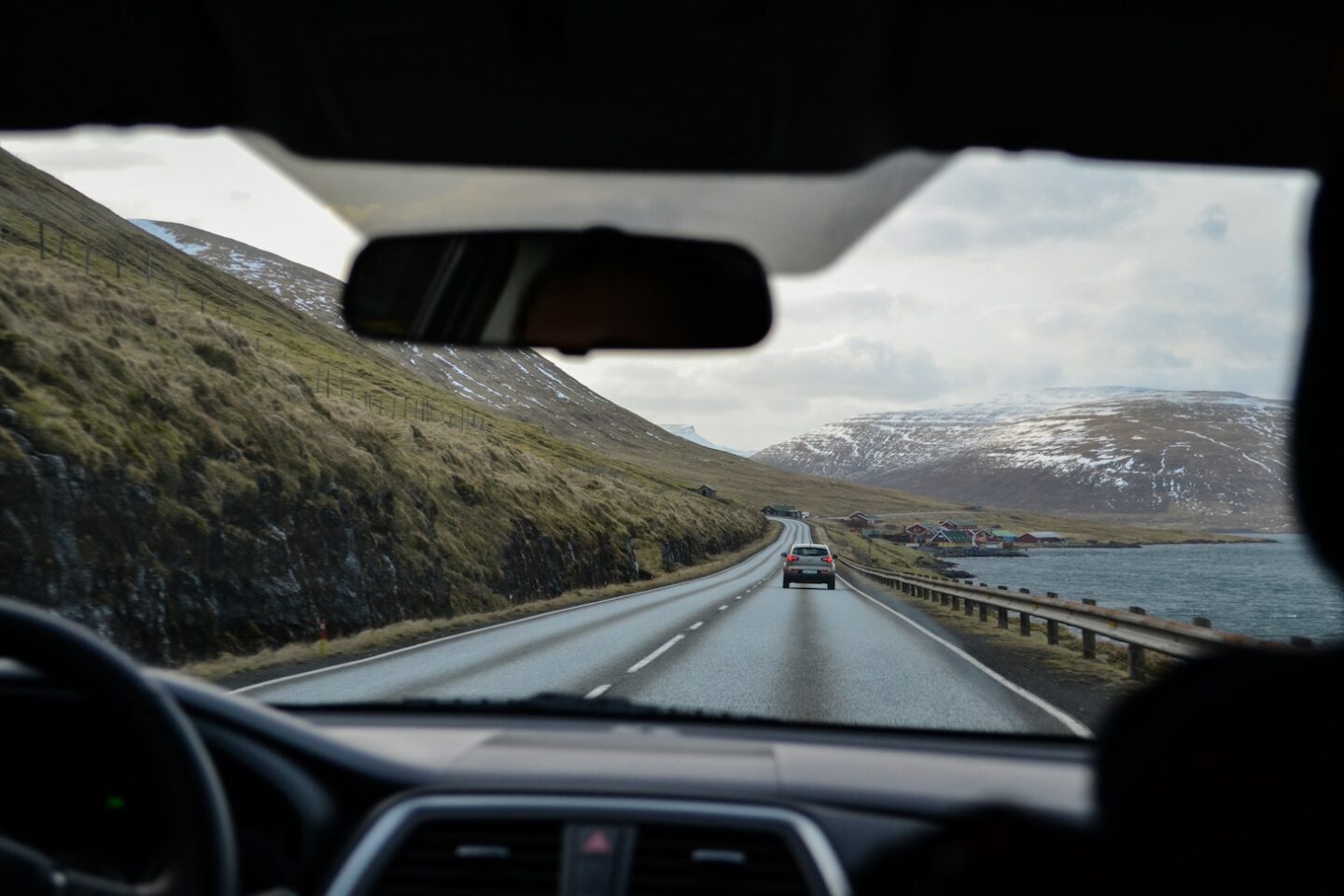
Navigating the Faroe Islands is an adventure in itself, offering diverse modes of transport for exploration. Renting a car is a popular choice, providing flexibility to traverse the islands at your own pace, taking in the scenic routes and stopping at various viewpoints. Ferries play a crucial role in connecting some of the more remote islands, offering a picturesque maritime journey between these stunning landscapes. During the high season, helicopter services further enhance accessibility, providing a unique and efficient way to hop between islands, granting awe-inspiring aerial views of the archipelago. Each mode of travel in the Faroe Islands contributes to the overall experience, allowing visitors to immerse themselves in the unique beauty and varied landscapes of this remote destination.
Driving
Driving in the Faroe Islands offers an excellent way to explore the breathtaking landscapes, but it comes with its own set of considerations. The network of roads includes some incredible engineering feats like underwater tunnels, connecting various islands. Tolls are applicable for these tunnels, usually ranging from 100 to 250 DKK (Danish Krone) depending on the tunnel and vehicle size. As for road conditions, the Faroes’ serpentine routes can be narrow and winding, so drivers should exercise caution, especially in unpredictable weather.
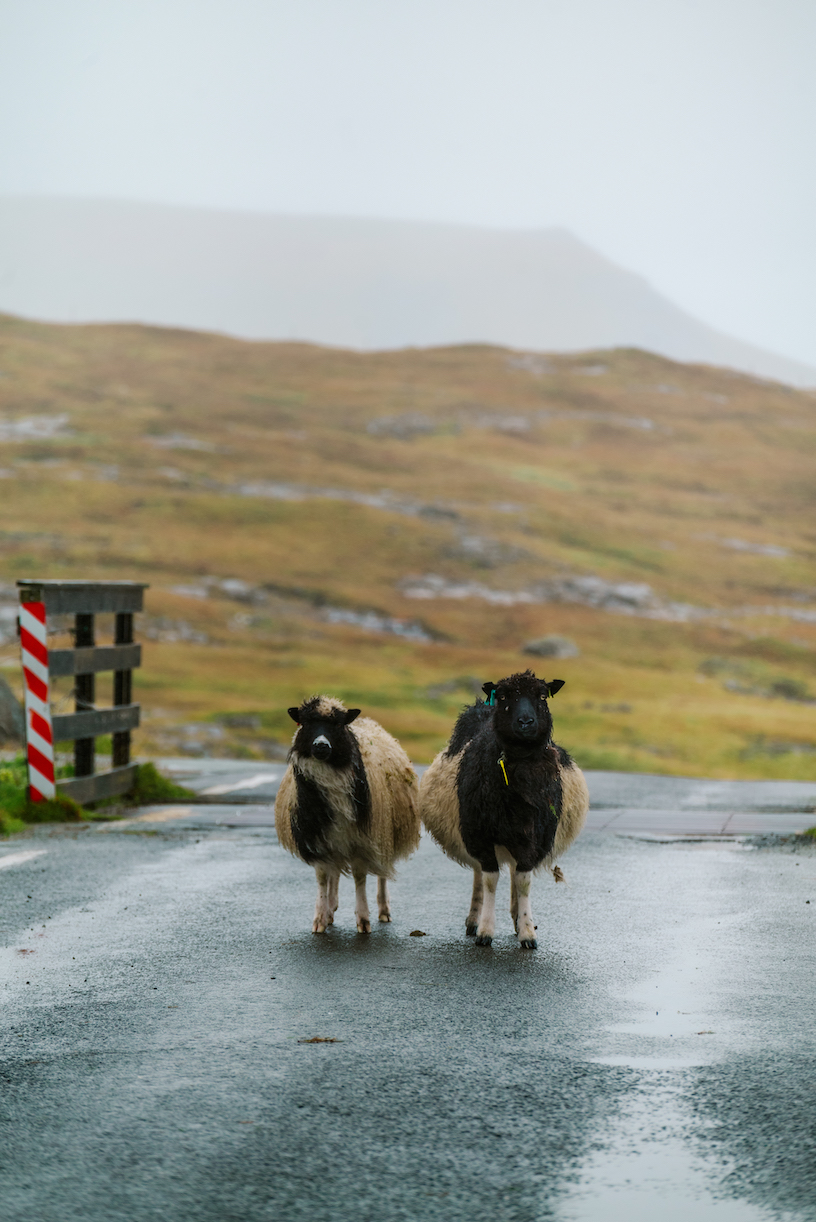
Wildlife, such as sheep and birds, freely roam, so keeping an eye out for them is crucial to prevent accidents. Speed limits are typically around 50-60 km/h in towns and 80 km/h on rural roads. Renting a car from a reliable company can enhance your travel experience, providing well-maintained vehicles and local expertise. Rent your car here!
Ferries
Ferries in the Faroe Islands form a vital link between several islands, facilitating exploration and travel. Routes typically connect Torshavn, the capital, with outlying islands like Nólsoy, Hestur, Koltur, and Sandoy. The pricing and schedules for these ferries can vary depending on the season, so it’s advisable to check the official website of the Strandfaraskip Landsins (SSL), the national ferry company, for up-to-date information. Generally, tickets for foot passengers are reasonably priced, while costs for bringing vehicles aboard differ based on size and destination. Schedules are usually accommodating, providing multiple daily trips, especially during the high season, but it’s recommended to plan ahead, considering that weather conditions can occasionally impact the ferry services. The SSL website typically provides comprehensive details on schedules, ticket prices, and any additional information necessary for a smooth ferry experience across the Faroe Islands.
Helicopter rides
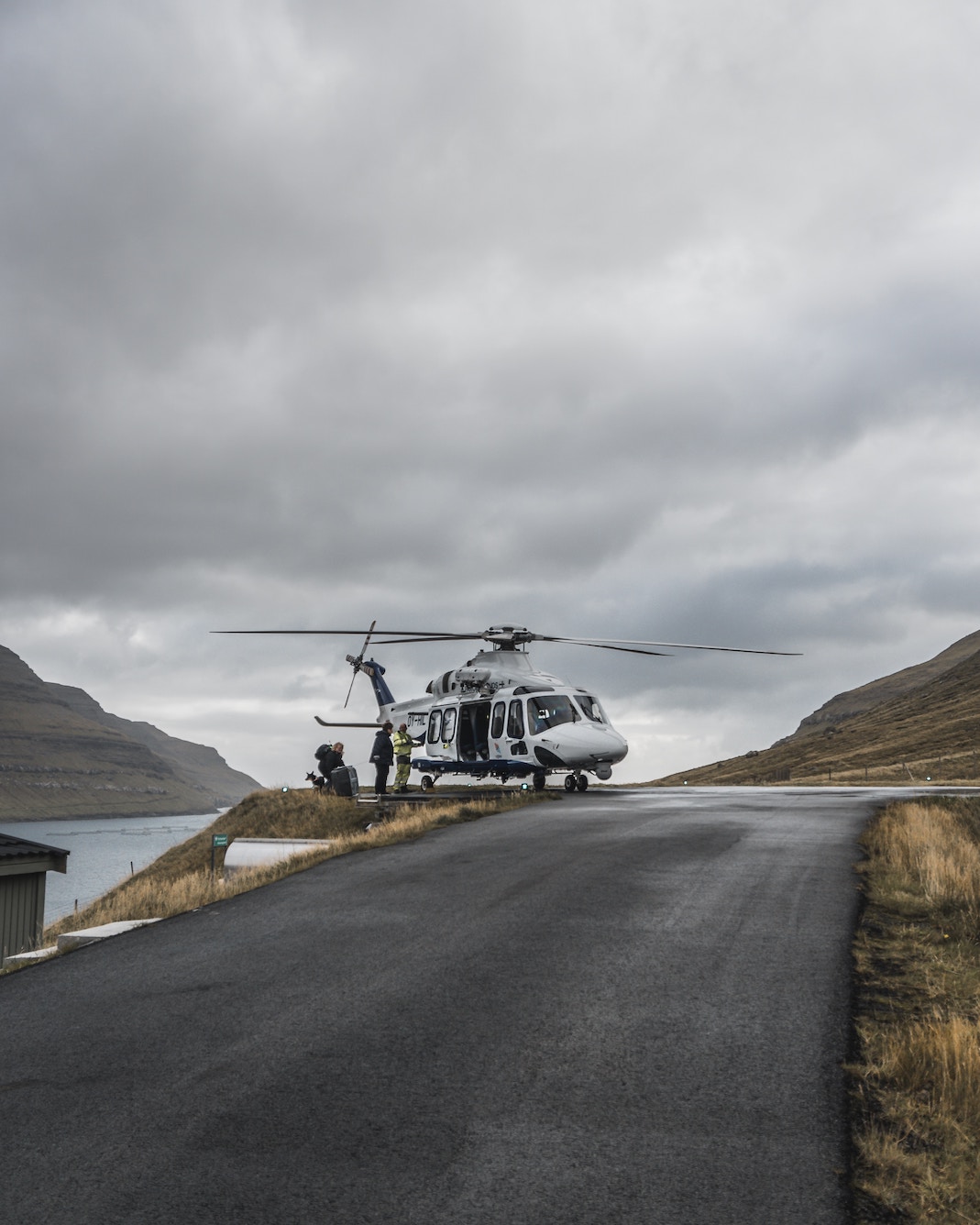
Helicopter services in the Faroe Islands offer an exceptional and scenic mode of travel, particularly during the high season. Operated by Atlantic Airways, the helicopter routes typically function from May to August, catering to both locals and tourists. These services connect the islands of Torshavn, Vágar, Mykines, and other smaller isles. Prices for helicopter rides can vary based on the specific route and the season, with costs typically higher during the peak summer months. It’s recommended to book these flights in advance due to their popularity, and also to account for potential weather-related disruptions, as the Faroe Islands’ climate can influence flight schedules. These helicopter journeys not only provide a quick and efficient way to access more remote or smaller islands but also offer breathtaking aerial views of the rugged landscapes, making the travel experience an adventure in itself. For updated information on schedules, prices, and routes, it’s advisable to check the Atlantic Airways website or contact their customer service for any additional details necessary for planning helicopter rides within the Faroe Islands.
Faroe Islands: high season vs low season
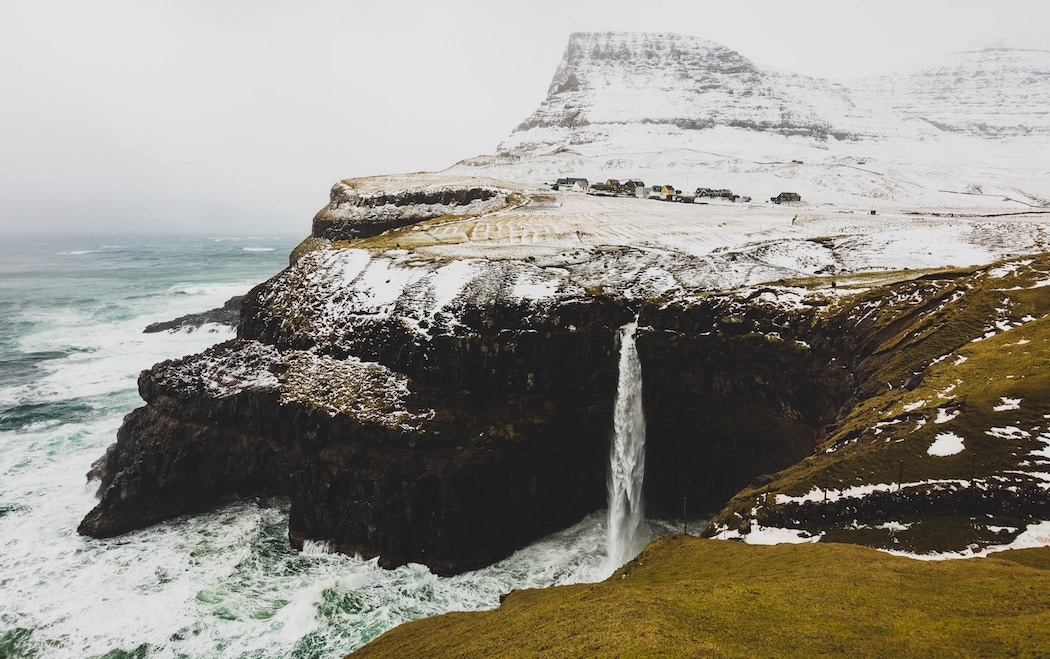
The Faroe Islands experience distinct high and low seasons, each offering unique experiences for visitors. The high season typically spans from May to August, drawing in travelers eager to explore the islands during the milder, more accommodating weather. These months see longer days, making it perfect for outdoor activities, including hiking, birdwatching, and enjoying the stunning landscapes. As for the low season, which begins in September and lasts through April, it introduces a different ambiance. With the changing weather, shorter days, and often inclement conditions, it’s a time when the islands adopt a quieter rhythm. Notably, from October 1st, many tourist facilities, including restaurants and some accommodations, start to wind down or even close for the season. While this might limit certain amenities, the low season offers the opportunity for a more serene and authentic experience, often appreciated by those seeking solitude and a closer connection with the Faroes’ raw beauty.
Where to stay in the Faroe Islands?
Strategic accommodation in the Faroe Islands often centers around Tórshavn, the capital, due to its central location and range of amenities. This puts visitors within reach of most of the archipelago’s attractions. The city offers various hotel options, from boutique stays to larger chains, catering to different preferences and budgets.
Some noteworthy hotels offering a comfortable and convenient base for exploration in Tórshavn include:
For those seeking a more remote experience, options extend to the outer islands, offering a chance to immerse in the untouched landscapes and smaller communities. These remote stays might include guesthouses or smaller hotels in areas like Klaksvík, Gjógv, or even Mykines.
Staying with locals via platforms like Airbnb also provides an intimate experience, allowing visitors to embrace the local way of life, gain insider tips, and savor the unique Faroese hospitality in homes scattered across the islands.
One of my favorites is a farm located in Æðuvík.
It is owned by Harriet, a female farmer who also sell her pictures. She takes gorgeous photographs of her animals and is currently really invested into saving the Faroese horses breed (there are only 89 left in the world at the time of writing)
Where to eat and drink in the Faroe Islands?
Here’s a list of some exceptional dining spots that offer a taste of the local flavors and global cuisines:
- Koks: Located in Kirkjubøur, this two Michelin stars restaurant is renowned for its innovative take on traditional Faroese dishes, providing an exquisite dining experience.
- Áarstova: Situated in Tórshavn, Áarstova serves up authentic Faroese cuisine, specializing in dishes like skerpikjøt (wind-dried mutton) and ræst kjøt (fermented mutton).
- Ræst: Another Michelin restaurant. Situated in Tórshavn, Ræst offers a unique dining experience where traditional Faroese ingredients are fermented and transformed into delectable dishes.
- Barbara Fish House: Located in Tórshavn, Barbara Fish House offers a casual and cozy atmosphere, with a focus on locally sourced and beautifully crafted seafood delicacies.
- Katrina Christiansen: In Tórshavn, Katrina Christiansen’s restaurant presents a fusion of local ingredients in tapas style dishes.
- Suppugarðurin: Found in Tórshavn, Suppugarðurin is a Japanese restaurant known for its authentic and meticulously prepared dishes, offering a taste of Japan in the heart of the Faroe Islands.

The best way to really experience a culture is to integrate with the locals. And in the Faroes, you can dine in the homes of Faroese people. This is called “Heimablídni“, which translates directly as “home hospitality”. You can enjoy authentic and intimate dining experiences in people’s homes all across the islands. Find the list of places that offers Heimablídni here.
If you are craving a typical nordic cinnamon bun, or any pastry, check out Breyðvirkið Bakery. Located in Tórshavn, Breyðvirkið Bakery is known for its delightful array of baked goods, offering a variety of freshly made bread and pastries, adding a touch of local flavors to Tórshavn’s culinary scene.
The Faroe Islands also offer a range of spots to unwind and enjoy a drink. Here’s a list of places where you can savor your favorite beverage while soaking in the local ambiance:
- Sirkus Bar – Located in Tórshavn, this trendy bar offers a lively atmosphere and a wide selection of drinks, often hosting live music and events.
- Mikkeller Tórshavn – A craft beer bar situated in Tórshavn, offering an array of unique and flavorful beers, perfect for beer enthusiasts.
- Paname Café: In Tórshavn, Paname Café offers a cozy ambiance and a range of delicious pastries and light meals, providing a taste of French-inspired cuisine in the heart of the Faroe Islands.
- Fríða Kaffihús: Situated in Klaksvík, Fríða Kaffihús offers a cozy and welcoming atmosphere, known for its delightful selection of coffee and light bites, creating a charming spot for a relaxing break in Klaksvík.
- Kaffihúsið Tórshavn – A cozy café in Tórshavn serving various beverages, including coffee, tea, and a selection of wines and spirits.
Faroe Islands: Best things to do
The Faroe Islands offer a myriad of experiences for every traveler. From hiking the scenic trails that reveal breathtaking vistas to exploring charming villages steeped in history, there’s something for everyone. Nature enthusiasts can revel in birdwatching along the stunning cliffs, while photographers can capture the ethereal landscapes at every turn. Whether it’s savoring traditional Faroese cuisine, delving into the local culture, or embarking on exhilarating outdoor adventures, the Faroes promise an unforgettable journey. For a deeper dive into the best activities this captivating destination has to offer check out my dedicated blog post on the best things to do in the Faroe Islands.
Wild camping is actualy not allowed in the Faroe Islands. Tourist are generally expected to stay at camp sites. It is though possible to get permission from the farmers to set up a tent on their land, but that option is restricted due to sheeps and other farming considerations and is often not an option.
Author
Thanks for letting me know. I’ve corrected the article 🙂
Great article about the lovely Faroe Islands, with loads of helpful information.
I just have one correction regarding camping, it is NOT allowed to do wild camping, camping is exclusively allowed at camping sites. If you want to do wild camping, you need to contact the landowner in the area you want to camp and ask for permission, since all the land in the outfield is privately owned, and primarily for sheep to graze on. 🙂
Author
Thank you for letting me know. I’ve corrected it!